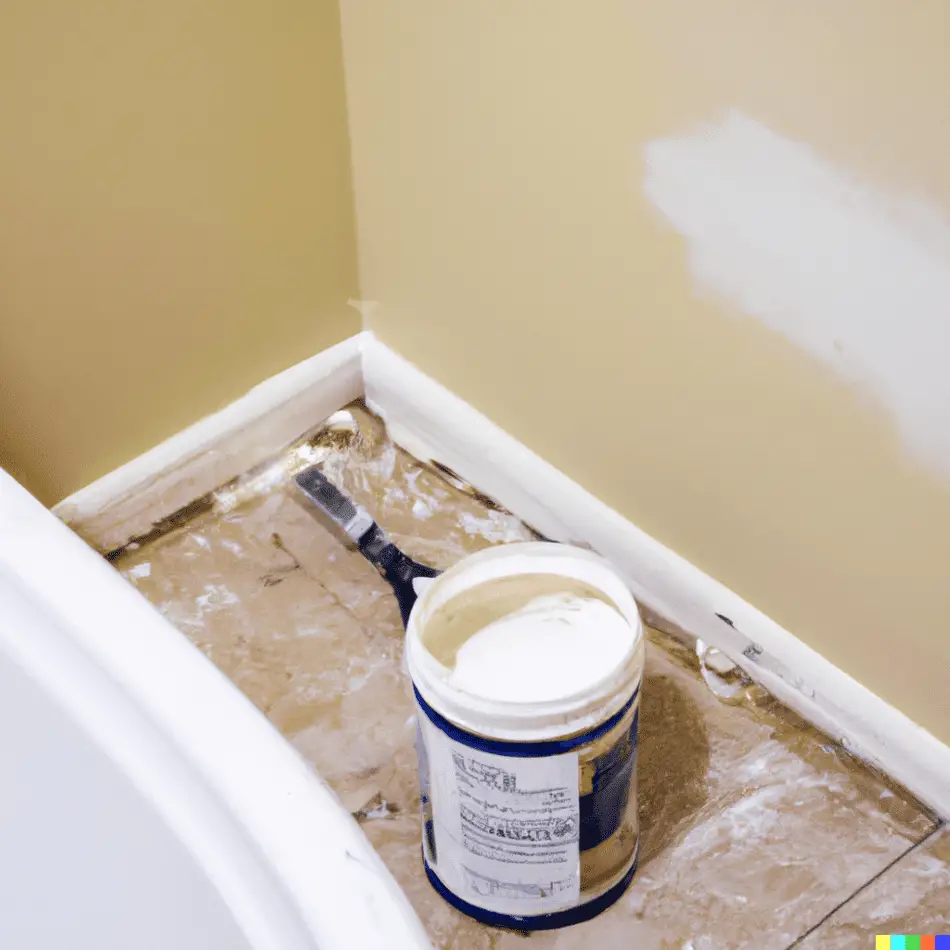Taking a shower after painting a bathroom can be a bit tricky. It is important to wait for the paint to fully dry before exposing it to any moisture. Otherwise, the paint can become ruined and require touch-ups, which can be frustrating and time-consuming.
When can I take a shower after painting bathroom? You can take a shower after painting bathroom 48 hours for oil-based types of paint, although again it can vary based on the specific type of paint and environmental conditions.
It is possible to take a shower a few hours after painting using latex paint. If using latex paint, but it is important to avoid getting the walls wet and to use a bathroom fan to help improve ventilation and speed up the drying process after your shower is over.
Article Recommendation: Learn how to remove a shower head safely, quickly and easily with these easy-to-follow instructions. Get the right tools to get the job done and know what to do to prevent any damage or leaks. Follow the steps to remove the shower head and you will be able to replace it with a new one in no time.
Dry and Cure Times for Paints
When paint dries, it means that the solvents used to make the paint liquid have evaporated, and the coating is no longer wet to the touch. Although the surface feels dry, the paint has not yet cured. Curing means that the paint has hardened and created a tough coating that provides adhesion.
For latex or water-based paints, paint dries in two stages
Surface Dry
This stage is when most of the water or solvent has evaporated leaving the paint dry to the touch, but it’s not dry enough for recoat. In general, latex paint requires around two hours to dry entirely to the touch.
Dry to Recoat
This stage indicates the time you must wait before you can put on a second coat of paint, as per the manufacturer’s instructions.
While latex paint is dry to the touch within a few hours, it requires up to 4 hours to be dry enough before adding a second coat.
Oil-Based Paints in a Washroom
Oil-based paints need more time to dry. They tend to feel dry to the touch within six to eight hours. After 24 to 48 hours, they are dry enough for recoating or handling.
Ways to Dry Painted Walls Faster
Drying painted walls can sometimes feel like a slow process, but luckily, there are ways to speed things up without compromising the quality of the paint job. Here are some tips to dry painted walls faster:
Lower Humidity
High humidity levels can slow down the paint’s drying time. To lower humidity, you can use a dehumidifier or air conditioner.
Increase Ventilation
Keeping windows open can increase ventilation, allowing more airflow in the room, and reducing humidity. Place a fan near the window to blow the humid air outside.
Use Fans
Set up an oscillating fan in the middle of the room, preferably facing away from the painted walls. It will help increase airflow, which will lead to faster drying.
Turn on ceiling fans
Ceiling fans can help move air around the room, which will speed up the drying process.
Add Japan Drier
Adding Japan Drier to oil-based paints can help speed up the curing process. It accelerates the oxidation process of the paint, allowing it to dry faster.
Increase Heat
Turning the thermostat up a few degrees in your bathroom can help speed up the evaporation process.
Use a Dehumidifier
Running a dehumidifier in the room where you painted the walls will increase evaporation and speed up the curing process.
Use High-Quality Paint
Using a high-quality paint that is known to dry faster can also help speed up the process.
Article Recommendation: When it comes to sealing a shower, users should always wait a minimum of 24 hours before use. This ensures that the sealant has properly cured and is ready for use. It is important to follow the instructions of the sealant manufacturer to ensure a successful outcome. This not only ensures that the sealant works as it should, but also that it is safe for use.
Article Recommendation: If you’re wondering whether your shower curtain should go inside or outside of your tub, the answer is usually inside. This ensures a better seal around the tub, which helps keep water from spilling onto the floor. It also provides a more aesthetically pleasing look. Furthermore, if you have a curved shower curtain rod, then it’s even more important to ensure that the shower curtain is inside the tub.

